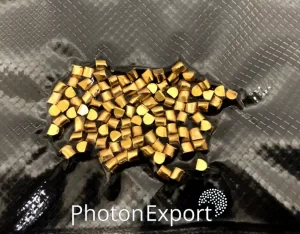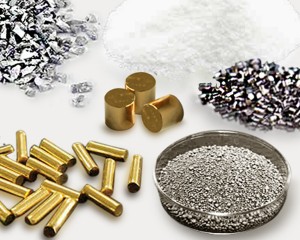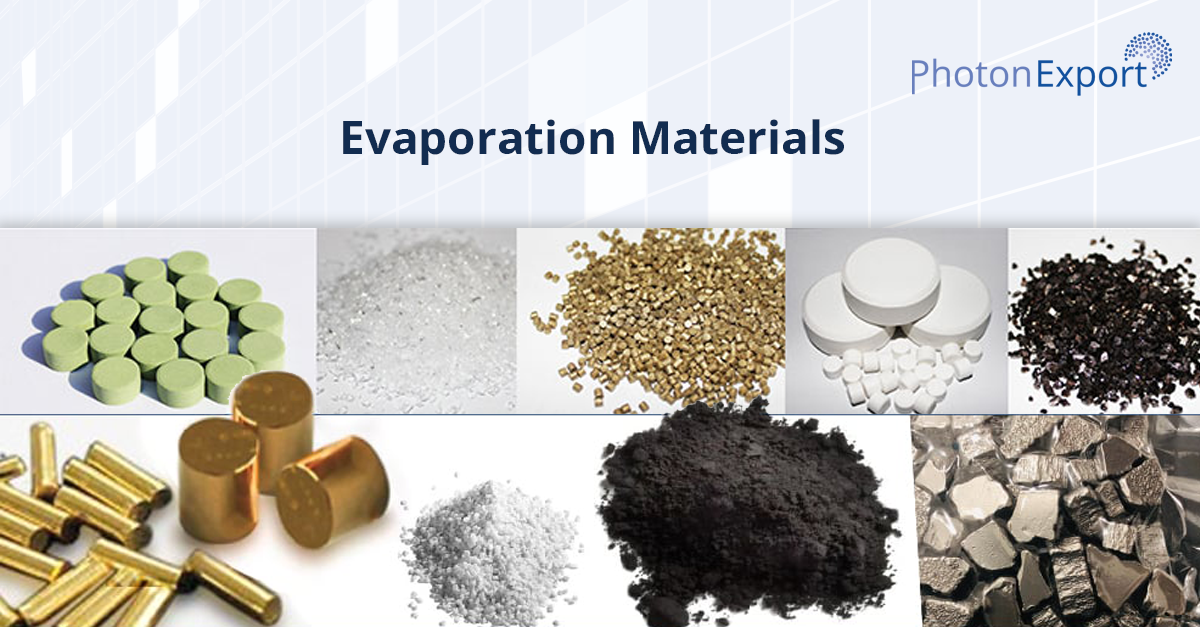Here are some commonly asked questions about evaporation materials.
If you’re looking to learn more about the uses, properties, and techniques of these materials, take a look at the following FAQs.
FAQ’s about evaporation materials
What are evaporation materials?
Evaporation materials are substances used to form thin films or coatings on surfaces through the process of evaporation. These materials are heated to a high temperature until they start to vaporize. While in the vacuum environment, the vaporized material goes directly toward the surface of an object, usually a (substrate) which is the target to get coated. There the vaporized material starts to condensate and form a thin film on the substrate.
This evaporation process happens in a vacuum chamber to prevent contamination of the surface with unwanted particles and ensure that only the source material lands on the substrate to create the thin films.
The thickness of the thin film is typically measured in nanometers, and the entire process can be carried out under various conditions, such as different temperatures, pressures, and gas environments, to achieve various properties and characteristics.
In what industries are evaporation materials used?
They are used in various industries; including electronics, optics, and aerospace. They are used in a range of industrial and scientific applications, such as the production of thin films, electronic devices, and coatings.
In the semiconductor industry, evaporation materials are used for the deposition of metal and metal oxide films onto silicon wafers, which are crucial components in the manufacturing of integrated circuits and microprocessors.
In the optical and aerospace industries, evaporation materials are used to create coatings that improve the performance and durability of lenses, mirrors, and other optical components.
Additionally, evaporation materials are also being used in the production of solar cells, medical devices, and sensors.
What are the purity levels of evaporation materials?
Typical purity levels for evaporation materials range from 99.9% to 99.99999%, depending on the application.
What are some examples of materials used as evaporation materials?

Materials used as evaporation materials range from pure metals, antimonides, arsenides, borides, carbides, fluorides, nitrides, oxides, selenides, silicides, sulfides, and tellurides.
What shapes do evaporation materials come in?
Some of the common shapes of evaporation materials are chunks, foils, pellets, wires, rods, shots, and slugs.
What are some common thermal evaporation techniques?
Some common thermal evaporation techniques include:
– Resistive Heating Evaporation: The evaporation material is heated in a resistively heated crucible, and the vapor condenses on the substrate.
– Electron Beam Evaporation: An electron beam is focused on the material, causing it to heat rapidly and evaporate.
– Flash Evaporation: The material is quickly heated to its evaporation temperature using a high-current pulse or intense heat source.
– Induction Heating Evaporation: Induction heating induces currents in the source material, leading to heating and evaporation.
– Knudsen Cell Evaporation (or effusion cell): A specialized crucible with a small opening allows controlled evaporation of the material.
Each evaporation technique has its advantages and is utilized based on factors like coating material, deposition rate, coating quality, and film thickness control.

Looking to purchase evaporation materials?
Request a quote today!
Learn morePhotonExport supplies high quality evaporation materials with low impurities & minimal surface contamination.
We offer a range of materials that meet the stringent requirements of various industries.
We pride ourselves on our ability to offer our customers high-purity materials with low impurities and minimal surface contamination.

